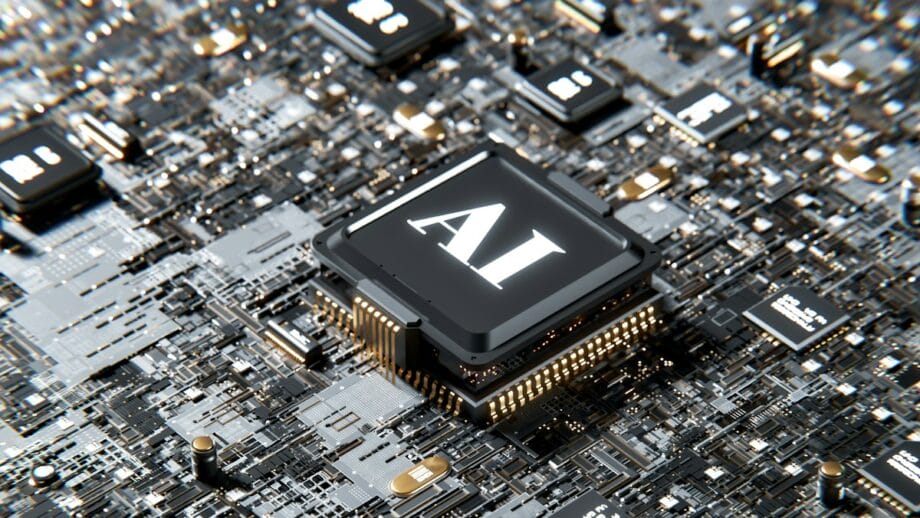Today’s digital world calls for high-speed internet and connectivity of data, giving rise to the 5G technology market. 5G stands for 5th generation mobile network, as it is an emerging international standard after the launch of 1G, 2G, 3 G, and 4G networks.
5G in 2025 brings into being a whole new level of network with its aim of interconnecting and covering nearly everybody and everything with or without machine-type communications. 5G wireless technology is designed to provide greater multi-Gbps peak data rates, ultra-low latency, increased reliability, extreme network capacity, greater availability, and a more consistent user experience for more people.
Supreme performance and greater efficiency lead to new user experiences and new industries converging with each other. In June 2018, the 3GPP (3rd Generation Partnership Project) officially set the standards for 5G, which marks a major milestone in telecommunications, as the distinct difference between 4G and 5G, in contrast to 4G, indicated a massive new cell tower construction. With 5G, the new radio frequency bands are built to operate on existing massive infrastructure.
5G has transformed the digital world, with its capacity for exponentially more data traffic, and is set to make the adoption of breakthrough technologies possible. 5G is empowering diverse industries and could potentially support as much as US$ 13.1 trillion in goods and services. These encompass autonomous cars, vast IoT networks, unbroken 4K/8K video streaming, and rich AR/VR experiences.
5G and the Future of Smart Cities

The global wireless telecommunications market hit a new high, with 5G connections amounting to 2.25 billion worldwide. 5G Americas and Omdia’s findings show that 5G has expanded four times faster than 4G LTE did in the same period, when LTE had only 500 million connections at the end of 2014. The mobile ecosystem keeps growing globally, with an expected 1.5 wireless connections per individual worldwide by the end of 2024, from one connection per user in 2014.
Already, 77% of North America’s population is covered by a 5G mobile network, and the North American region remains at the forefront of innovative capacity, network deployment, and sophisticated use cases for consumer and enterprise applications. 5G has already proven to be capable of remaking industries in ways beyond being merely a faster mobile network.
5G also offers the infrastructure for smart transportation systems, more effective distribution of energy resources between grids, and better resource management to enhance the sense of community within cities. 5G influences more than the government and business sectors of society; it reaches into telehealth technology, entertainment from extended realities, and experience-based education to enhance daily lives on several fronts.
AI Improves 5G Networks and XR Patent Innovation Trends

The field of 5G network resource allocation is transforming the application of artificial intelligence and machine learning algorithms. Moving from traditional models to data-driven, adaptive methods such as RL and DRL, AI algorithms can significantly improve network throughput, reduce latency, and optimize system overhead.
As conventional approaches grapple with increasing complexity and user requirements, AI-based optimization delivers real-time solutions that mesh with current network conditions, facilitating more efficient and effective resource utilization in the 5G age and beyond.
As 5G networks roll out around the world, their capability to deliver ultra-low latency and increased reliability is becoming a major driver of the next generation of XR applications. Underpinning this technology revolution is a growing body of patents reflecting innovation in both XR technologies and 5G-enabled applications. These patents not only provide a roadmap for the future development of XR and 5G working in tandem, but they also reflect the IPR trends that will shape future development in this area.
By studying the patent landscape, we gain useful insights into the development of XR technologies as they integrate with 5G networks and opportunities for companies to stay in front of the XR competitive sets.
AI and 5G in 2025 and Beyond: Transforming Connectivity, Efficiency, and Customer Experience

5G technology, a technology paradigm shift comparable to the transition from typewriter to computer, is necessary to apply AI capabilities in telecommunications. As AI technologies have the potential to enhance the performance and efficiency of the 5G system, the widespread proliferation of 5G-connected devices will power distributed intelligence through increasingly sophisticated AI learning and inference. A very essential part of 5G is supporting an incredibly large number of connected devices.
Such connectivity plays an imperative role in disseminating the computational powers and intelligence of AI to a broad geography. It not only increases the number of points of data collection and interaction but also enhances AI learning and inference operations by drawing on the insights of a wider range of sources.
The interplay between AI and 5G technologies is set to sharply enhance customer experiences in the telecommunications sector, as AI is a key enabler of 5G network deployment, facilitating more effective network planning and design, enhancing network performance, and improving customer experience.
6G Will Transform Connectivity, Merging Digital and Physical Worlds Seamlessly

The globe is witnessing a very quick pace of the evolution of the wireless or mobile technology scene. The telecommunication industry has evolved rapidly over a brief period from 1G to 5G technology, though 5G is yet to consolidate its foothold to become universally acceptable, the telecommunication industry is already gearing up for the advent of the next level of 6G technology.
As industries evolve, the transition from the 5G technology market to 6G will require significant investments in research, development, and regulatory frameworks to ensure security, interoperability, and sustainability, and the future 6G networks will integrate physical objects, humans and activities into a complete cyber-physical world where the digital and physical worlds we know today have merged into one. This will give us new means of engaging with the world around us, new opportunities to connect anywhere, and new means of experiencing distant places and cultures.
Through this, 6G will be the foundation of a more human-centric, sustainable, and efficient future society. 6G will evolve from 5G, developing from the networks of today to the requirements of 2030 and beyond. The initial phase of 6G will build upon technologies and use cases that were first brought forward during the 5G era, providing fundamental support for fundamental services and deployment situations from day one.
It will entail reinforcements in network exposure, programmable networks, and use cases such as enhanced mobile broadband (eMBB), fixed wireless access (FWA), and the Internet of Things (IoT).
6G Will Enhance Connectivity with AI, Cloud, and Seamless Network Integration

As 6G emerges, new network technologies will start to redefine service potential, shifting networks into novel paradigms of ultra-lean design, unlimited connectivity, integrated sensing and communications, and transparent ground, air, and satellite coverage. Consequently, applications such as massive digital twinning, autonomous mobility, and extensive area mixed reality are all set to burst into the commercial mainstream in the 6G era.
From 2024 to 2030 alone, overall mobile data traffic around the world is projected to increase by a factor of 2.5, with yet more acceleration in store for the age of 6G. To enable that, 6G will take advantage of new technological innovations and use new design principles born out of current fast-paced technology developments such as AI, computer hardware, and cloud.
To this purpose, 6G will extend and further develop the 5G capabilities and be more integrated into the rest of the ICT ecosystem of cloud platforms and applications. 6G will not be merely a matter of speed.
New features will further extend the potential of the network platform even further beyond communication services, e.g., information, AI, and compute services. This will provide developers with greater access to much broader sets of APIs.
The APIs will leverage device and server capabilities, multiple network domains, and services in addition to connectivity. This will facilitate easier satisfaction of high application demands on communications and other capabilities of the underlying infrastructure.
Conclusion: Embracing the Future of Ultra-Fast Connectivity

According to Pristine Market Insights, the accelerated deployment of 5G technology is revolutionizing industries across the world in a fundamental way, leading to historic levels of connectivity, automation, and digital change. As 5G facilitates ultra-high speeds, low latency, and ultra-large IoT connections, companies and governments are using its potential to fuel innovation in autonomous transportation, smart cities, industrial automation, telemedicine, and future entertainment experiences.
As a primary driver of artificial intelligence, 5G networks are more and more optimized using machine learning and deep reinforcement learning techniques, making them more efficient, reliable, and adaptive for network management. This AI-5G symbiotic partnership is poised to transform network optimization, providing end-to-end seamless and intelligent connectivity solutions.
With an anticipated increase in mobile data usage, 6G will expand the scope of network architecture, allowing seamless integration of terrestrial, aerial, and satellite networks to provide global coverage. Predictions are that by 2030, 6G networks will revolutionize the digital world with AI-powered infrastructure, ultra-low energy usage, terahertz spectrum communication, and smart edge computing.
In the end, the transition to 6G will be a paradigm shift towards a hyper-connected, AI-powered society, opening up new economic possibilities and redefining the future of communication and digital transformation.





